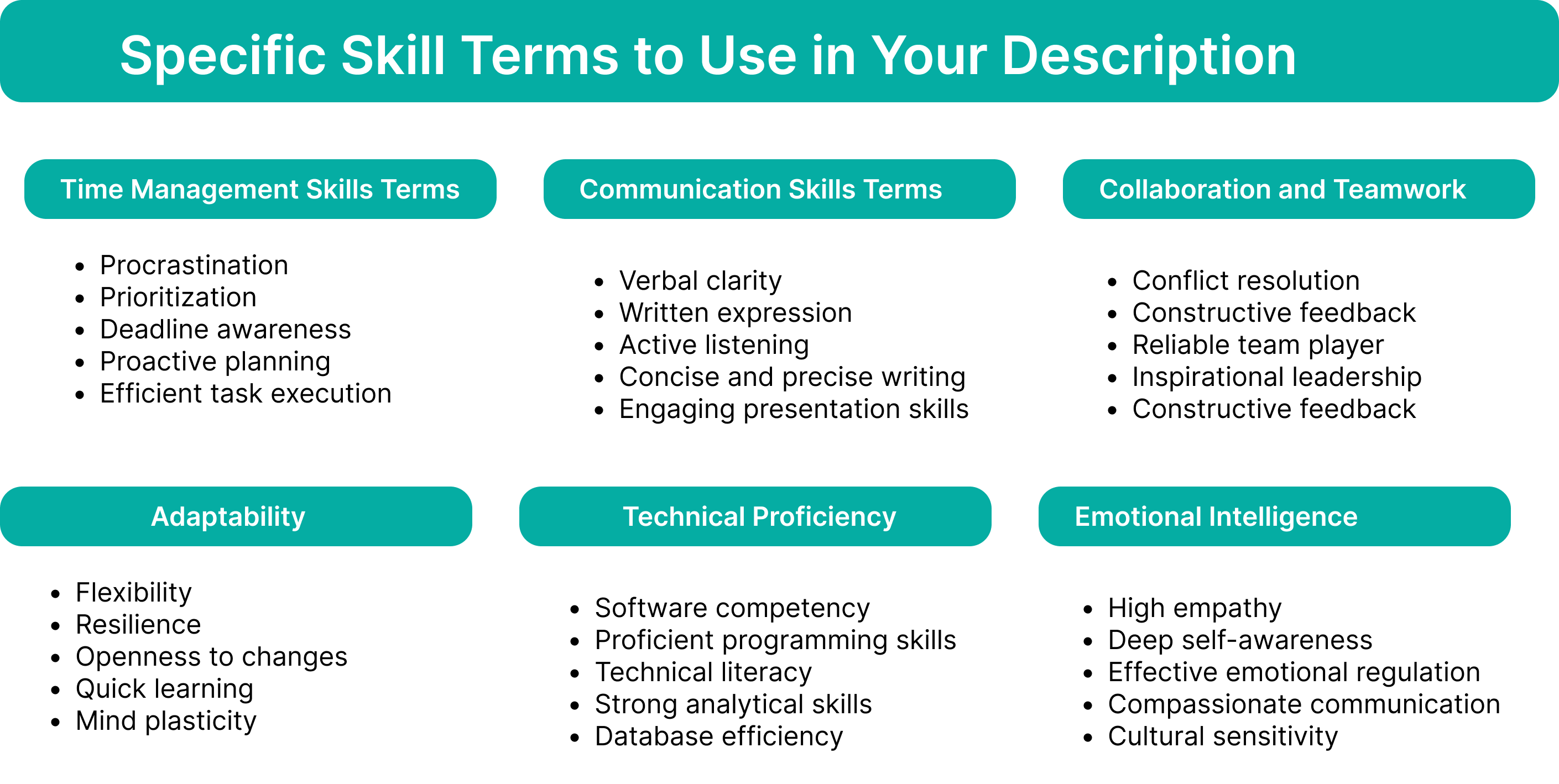Terms for Areas of Improvement. Use Specific Terms for Your Evaluations
For example, if you want to use any of them, you can write, “The student:
- Has to enhance analytical skills.
- Needs to foster critical thinking.
- Needs to focus on effective task distribution.
- Must improve time prioritizing.
- Has to work on meeting deadlines more consistently.”
Understanding Different Learning Styles: What Are They?
As you probably know, people perceive information differently, depending on their congenital or acquired learning style. Some students learn better when dealing with written text, and some operate audio playlists more efficiently. You may need to specify that when discussing your terms of work with a new employer or for effective communication with teachers. Anyway, here are some examples with style explanations.For describing diverse learning styles, it is most useful to use specific perception-based terms. For instance, you can focus on five basic human perception senses and then diversify them with cognitive function descriptions (imagination, memory, attention, decision-making, etc.).
Words to describe different perception styles
- Demonstrates strong visual perception. The person who learns better when reading the text or seeing the concepts in pictures and schemes.
- Auditory-driven learning style. The person with an auditory learning style prefers to hear the explanations in person rather than reading.
- An analytical mind. A student has an analytical mind if they can easily deal with causal relations and large data volumes.
- Intuitive student. An intuitive student sees the backbone of any concept without any explanation or guidance.
- An adaptive learner. You are an adaptive learner if you can switch between learning styles or study in a rapidly changing environment.
- A detail-oriented studying approach. A student with a detail-oriented approach needs to notice all the nuances and will not be satisfied with brief or superficial explanations.
- Connects the dots easily. This phrase describes the person who sees causal relations between concepts.
- Thinks outside the box. This is an alternative phrase to describe creative students.
Try our pro service and get a 20% welcome discount
Place an orderFAQ: The Ultimate Facts to Know about Student Academic Descriptions
1. How can I describe a student’s academic abilities? To describe a student’s academic abilities, take time to think of the student’s personality and performance. Write down all basic characteristics you noticed, and then use this article to specify them. 2. What words reflect positive student attitudes? There are many such words. For example, you can use words like “diligent,” “proactive,” “positive-minded,” “eager to learn,” and “collaborative.” 3. How do I balance praise and constructive feedback in evaluations? To balance between praise and a constructive attitude, you can concentrate on particular student achievements instead of vague personal characteristics. For example, praise specific well-done tasks and emphasize what qualities are highly valued for this type of assignment.Our Advantages
- Quality Work
- Unlimited Revisions
- Affordable Pricing
- 24/7 Support
- Fast Delivery
Order Now
